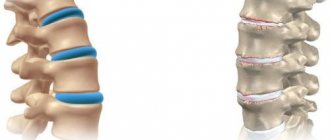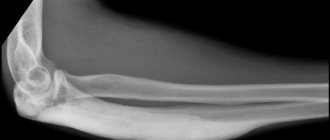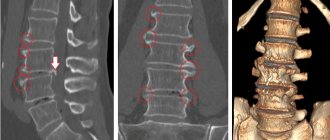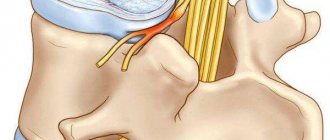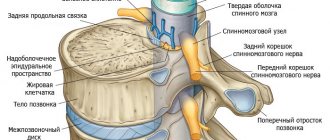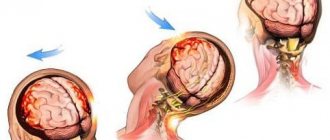Neuroma is a tumor in the spinal, peripheral and cranial nerves. Other names for this tumor are schwannoma or neurilemma. It is a capsule-shaped benign neoplasm. The probability of developing a schwannoma ranges from 9–14%, depending on the location.
Most often appears in the auditory or vestibulocochlear nerve. Rarely develops into a malignant neoplasm.
Types of disease
Neuroma is divided into two types - benign and malignant. Benign is a slowly growing node that does not cause disruptions or disturbances in the functioning of the body. Location: head, spine, neck.
Malignant neuroma is the result of the transition of a benign tumor to a malignant sarcoma of the nerve. It is difficult to define and establish clear boundaries of the disease. The node grows quickly, and metastases may develop in other organs. The tumor can reach large sizes; the larger, the more difficult it is to treat. Location: forearms, feet, hands. Take into account! The malignant form is typical for people aged 20 to 40 years, and the benign stage is typical for people aged 50 to 60 years. The clinical symptoms of both forms are similar, which complicates the situation; the doctor needs to clearly understand what stage the disease belongs to.
The following types of neuroma are also distinguished:
- tumor of the thoracic and cervical regions. The disease affects the spine, when the tumor grows through the intervertebral spaces, a schwannoma of the neck begins to develop;
- Morton's neuroma. The tumor affects the foot, touching the nerve endings. In the affected area, both one and both limbs often grow between the fingers;
- a brain tumor. Slow development, the tumor is limited to neighboring tissues;
- acoustic schwannoma. Localization - right or left ear, slow development.
The disease can affect the trigeminal nerve and can develop in the lower leg area, between the right and left pleural cavities.
Diagnostics
It is important for the doctor to carefully collect anamnesis from the patient and analyze existing complaints. General clinical examinations are prescribed - general blood and urine analysis, blood biochemistry.
To identify the localization of pathology, X-ray diagnostics is used, but its accuracy is significantly inferior to computed tomography or magnetic resonance imaging. For this reason, it is better to resort to these methods. Ultrasound may sometimes be required to assess damage to surrounding soft tissue.
It is also important to perform a biopsy of the tumor, as this provides information about the malignancy or benignity of the process and helps determine treatment tactics.
Causes of the disease and main symptoms
If a doctor has diagnosed a neuroma of the auditory nerve, spine, or brain, this does not mean that the disease was affected by another disease. This puts specialists in a difficult position, since it is difficult to establish the exact cause of the disease; it develops in healthy people.
The cause of the development of nerve tumors can be influenced by genetic diseases, among which are:
- schwannomatosis;
- neurofibromatosis (type 1,2);
- Gorlin-Goltz syndrome.
If a person has a genetic predisposition and close relatives had malignant tumors, then this can also be a reason. It is necessary to highlight frequent injuries and exposure to ionizing radiation.
Among the common symptoms of neuroma are:
- palpable formation (located above the skin);
- pain (severe pain when pressing).
Nerve swelling has visible and invisible signs. If a nerve located deep in the tissue is affected, there will be no signs. Otherwise, a dense formation appears above the skin.
Nerve swelling may not bother you for several months or years, but this does not mean that the disease does not progress. There are symptoms depending on the location of the disease.
Acoustic neuroma
The main symptoms of acoustic neuroma include:
- frequent ringing in the ears;
- hearing impairment;
- dizziness (especially when turning your head);
- lack of balance (one side will seem heavier);
These symptoms can lead to the development of deafness. The disease is accompanied by nausea, vomiting, and pain.
Trigeminal nerve injury
Symptoms include:
- burning;
- severe pain;
- numbness in areas of the face (for example, in the eyebrows, chin, lips);
- atrophy of the masticatory muscles;
The patient may lose taste and increase salivation. Late stages of development are characterized by intracranial pressure.
Spinal neuroma
The following symptoms are typical for spinal neuroma:
- pain in the back;
- pain in arms, legs;
- numbness of legs, arms;
- pain in the lumbar region;
The patient complains of intestinal problems, difficulty urinating, for example, there may be incontinence, the disease can lead to paralysis of the legs.
Pulmonary neuroma
Symptoms:
- increased cough;
- pain during inhalation/exhalation;
- the appearance of frequent shortness of breath.
Cervical neuroma
Among the main symptoms are:
- pain while swallowing;
- the tongue will begin to go numb;
- swelling will appear on the neck;
Also characteristic is pain in the neck area, radiating to the shoulders.
Diagnostic methods for studying pathology
People seek medical help if they have serious symptoms, which indicates a long-term development of the tumor. After reviewing the patient’s complaints and conducting an external examination, the doctor prescribes a comprehensive diagnosis to clarify the diagnosis.
- A simple and accessible method used in all clinics is radiography of the spine. X-rays reveal the size of the tumor and location.
- Magnetic resonance imaging (MRI) allows for a detailed examination of the vertebrae, determining the size and location of the tumor, the method of blood supply, and drawing up a surgical plan.
- Computed tomography (CT) is not inferior in information content to MRI. The method is based on radiation. Has an affordable price.
- For pain in the retroperitoneal space, ultrasound examination is recommended. It will not detect a tumor, but will allow you to exclude pathologies of internal organs.
- Neoplasm tissue for histological examination is obtained using a biopsy. It is important to differentiate the node and exclude a malignant process.
Treatment of neuroma
Treatment of neuroma depends on the stage and form of the disease - benign or malignant.
Surgical intervention
Neuroma of the brain, auditory nerve, or spine in complex forms is treated with surgical intervention. If this benign formation is small in size and does not cause discomfort, then the neuroma may not be removed. If this is a malignant form, then surgery is a mandatory procedure.
Radiosurgery
Removal of a neuroma using radiosurgery involves exposure to the source of the disease using radioactive radiation. This is a painless procedure lasting no more than an hour.
Chemotherapy and radiation therapy
Used after surgical removal of a neuroma, it allows you to get rid of the remnants of the disease. The treatment regimen for each client is selected individually.
What it is
Spinal neuroma (other terms: schwannoma, neurinoma, schwannoglioma) is a type of benign neoplasm of spinal tissue that affects the nerve structures of the back and skull. Schwannoma of the spinal column grows from Schwann cells and looks like a large, dense neoplasm similar to a granuloma - a core with an elastic capsule. The tumor is characterized by slow growth, the intensity of development depends on the influence of various factors and rarely exceeds 2 mm per year. However, there have been cases of rapid tumor growth and damage to a significant part of the meninges.
The capsular membrane prevents the spread and metastasis of the tumor in the early stages, therefore, with timely detection and treatment, it is quite possible to avoid tissue malignancy.
Prognosis for treatment of malignant disease
Treatment of neuroma should be carried out regardless of stage and form. A benign form can develop into a malignant one, which will lead to the death of the patient. With a benign form, the five-year survival rate is 100%, with a malignant stage – from 37 to 65%. The tumor grows slowly; the location of the disease and the possibility of surgery are important. After removal, a neuroma can lead to loss of hearing, facial expressions, and some motor functions may fail. Surgery for neuroma in most cases does not have negative consequences, the patient is prescribed postoperative care and recovery.
Diagnostics
Schwannoma of the spine is the field of activity of a neurologist, neuropathologist. Diagnosis of neuroma consists of carrying out a whole range of measures, mainly instrumental studies for differentiation with other neurological diseases. After a physical examination, clarification of symptoms and complaints, study of clinical and life history, the following examinations are prescribed:
- Cerebral neuroimaging. The method is common for tumors of the cranial nerves and is performed using computed tomography or magnetic resonance imaging with a contrast agent.
- Isolated magnetic resonance imaging study. The method determines the degree of compression of the nerve roots and detects schwannomas of various sizes, including small multiple lesions.
- Audiometry. Required for complaints of hearing loss and requires consultation with an otolaryngologist or audiologist. Other causes of hearing pathology are objectively excluded.
- Sonography or ultrasound of peripheral nerves is prescribed if a tumor of the nerve trunk of the extremities is suspected; it helps to determine the degree of compression of the nerve structures.
Patients undergo blood and urine tests. Among laboratory tests, biopsy is important - the study of the histopathological structure of the tumor.
Additionally, magnetic resonance imaging of the back is performed in all parts of the spine, and ultrasound of the lesion is performed. Neuroma requires differential diagnosis from other extramedullary tumors, inflammatory or compression-ischemic neuropathy.
Possible complications
Without treatment, neuroma leads to complications. They depend on the location of the tumor, its size and nature. With small neoplasias that are detected and treated in time, there are no significant consequences, but large neoplasms put pressure on the nerves and interfere with brain activity.
Deafness is a complication that develops when the auditory nerve is irreversibly damaged. Proper therapy contributes to the full or partial restoration of hearing, but in its absence the patient stops hearing.
Prolonged compression of the auditory nerve leads to its atrophy, which cannot be overcome even by removing the tumor. With unilateral schwannoma, problems are observed in one ear. But there is a 5% chance that a person will lose their hearing completely.
The second complication can be called paresis of the facial nerve. It also develops in advanced cases, when the facial nerve is exposed to pressure from the neuroma for a long time. This leads to its atrophy. The result is loss of taste, increased salivation on the injured side, and facial asymmetry.
Cerebellar disorders occur with advanced trigeminal neuroma. Prolonged pressure on the cerebellum causes poor coordination of movements. The patient has difficulty maintaining balance and his gait becomes uneven.
Another pathology caused by schwannoma is intracranial hypertension syndrome. It occurs in the presence of large inoperable neoplasia. Because of them, difficulties arise with the circulation and outflow of cerebral fluid. It accumulates in the brain structures, which causes increased pressure inside the skull. This disorder is indicated by attacks of nausea, headaches, dizziness, convulsions, fainting, and visual disturbances. When there is excessive accumulation of cerebral fluid, the patient develops hydrocephalus.
A dangerous complication of brain schwannoma is its degeneration into a cancerous tumor. If left untreated, the patient faces death.


